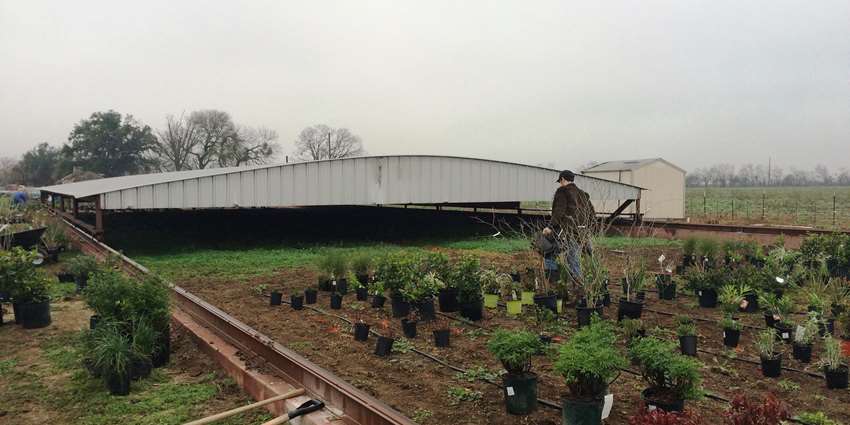Does a tough modern rose really need 4 inches of water a month to survive a drought? Can a plant bounce back after an entire growing season without rain?
A group of Central Texas entities is hoping to find these and other answers by analyzing popular local landscape plants in a drought-survivability study.
The Texas A&M Institute of Renewable Resources (IRNR), Texas A&M AgriLife Research, San Antonio Water System (SAWS), San Antonio River Authority (SARA) and the cities of Austin and Georgetown recently launched a one-year study. The study will examine 100 of the most popular Central Texas landscape plants to determine the minimum amount of water required by the plants to survive and recover after a drought.
Dr. Calvin Finch, urban water program director for IRNR, and Dr. Raul Cabrera, AgriLife Research associate professor in Uvalde, are the lead researchers for the study. The study is being conducted at the existing SAWS drought simulator and a new drought simulator in Georgetown, when it is completed.
“The study consists of 1,600 plants that will be subjected to four different drought treatments: no water, and 20 percent, 40 percent and 60 percent of potential evapotranspiration (PET) to determine the actual amount of water they require to survive,” Finch said. “One hundred percent of PET is the estimated amount of water moving through the plant and from the soil based on the weather conditions.”
“Studied plants that decline will then be restored to full irrigation to see if and how long it takes them to recover,” he said.
Cabrera said an analysis of data from metered-water use by single-family residences in Texas indicates that about 31 percent of their annual water consumption is for outdoor uses, mostly landscape irrigation.
“If these plants can survive on less water than commonly thought, the water savings could be significant,” Cabrera said.
Karen Guz, SAWS’ conservation director, said they are looking forward to having objective results to reference when working with customers.
“This study will allow us to quantify how our most beautiful landscape plants can retain quality appearance with very little water,” Guz said. “Our similar study from 2006 confirmed that grass can survive on very little water. This study will show that not only can some of the most attractive shrubs and blooming plants survive drought, they can look great.”
SARA’s Director of Technical Services Steven J. Raabe said the authority is “particularly interested in plants that are suitable for low impact development applications like rain gardens and bioswales, which alternate between wet and dry conditions.”
“If the study shows that many of the plants can prosper on less water than is currently recommended, water purveyors, such as the partners in this study, and landscapers will have more accurate information on water needs to use in landscape planning, plant marketing, water demand estimates and drought restrictions,” Finch said.
SAWS, SARA and the cities of Georgetown and Austin are funding the study. The Texas Water Foundation is serving as the funding coordinator.


